Although there is only one “true” national park in New England, there are also lots of other National Park Service sites in the Northeast. The Park Service itself regularly refers to its 420+ units as “national parks”, which is why I’ll also use that term broadly throughout this post.
Besides Acadia National Park, one of the most visited U.S. national parks, New England is home to over two dozen other parks.
Those range from national seashores and national trails to national historical parks and historic sites. You’ll find them in every state in New England: Connecticut, Rhode Island, Massachusetts, Vermont, New Hampshire and Maine.
This article about national parks in New England contains affiliate links. You can read more about our Terms of Use / Disclosure here.
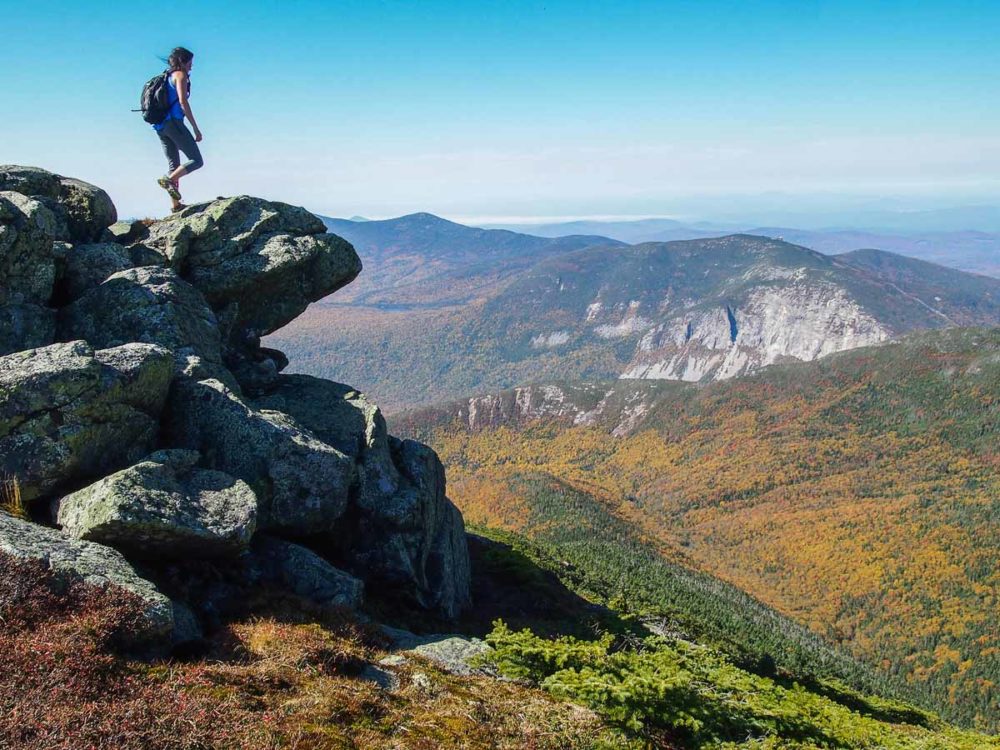
Contents
- 12 Amazing National Parks in New England to Visit
- 1. Cape Cod National Seashore, Massachusetts
- 2. Saint-Gaudens National Historical Park, New Hampshire
- 3. Adams National Historical Park, Massachusetts
- 4. Salem Maritime National Historic Site, Massachusetts,
- 5. Marsh-Billings-Rockefeller National Historical Park, Vermont
- 6. Appalachian National Scenic Trail, Connecticut, Massachusetts, Vermont, New Hampshire & Maine
- 7. John Fitzgerald Kennedy National Historic Site, Massachusetts
- 8. Frederick Law Olmsted National Historic Site, Massachusetts
- 9. Boston National Historical Park, Massachusetts
- 10. Boston African American National Historic Site, Massachusetts
- 11. New Bedford Whaling National Historical Park, Massachusetts
- 12. Acadia National Park, Maine
- Complete List of New England National Park Service Sites
12 Amazing National Parks in New England to Visit
It probably doesn’t come as a big surprise, but many of the New England national parks preserve some kind of historic area.
Whether it’s a farm, a home, an urban neighborhood or a harbor, these places offer an insight into life in colonial North America, as well as in the young United States.
Other New England national parks, on the other hand, encompass beautiful nature. Of course, Acadia National Park needs no introduction, a park home to stunning coastlines, rocky summits, pristine ponds and historic trails.
At Cape Cod, you’ll find some of the finest beaches on the East Coast, while the Appalachian Trail offers amazing hiking opportunities.
This is all to say that the National Park Service sites in New England represent the Park System pretty well, offering a great mix of history, culture, landscapes and wildlife.
1. Cape Cod National Seashore, Massachusetts
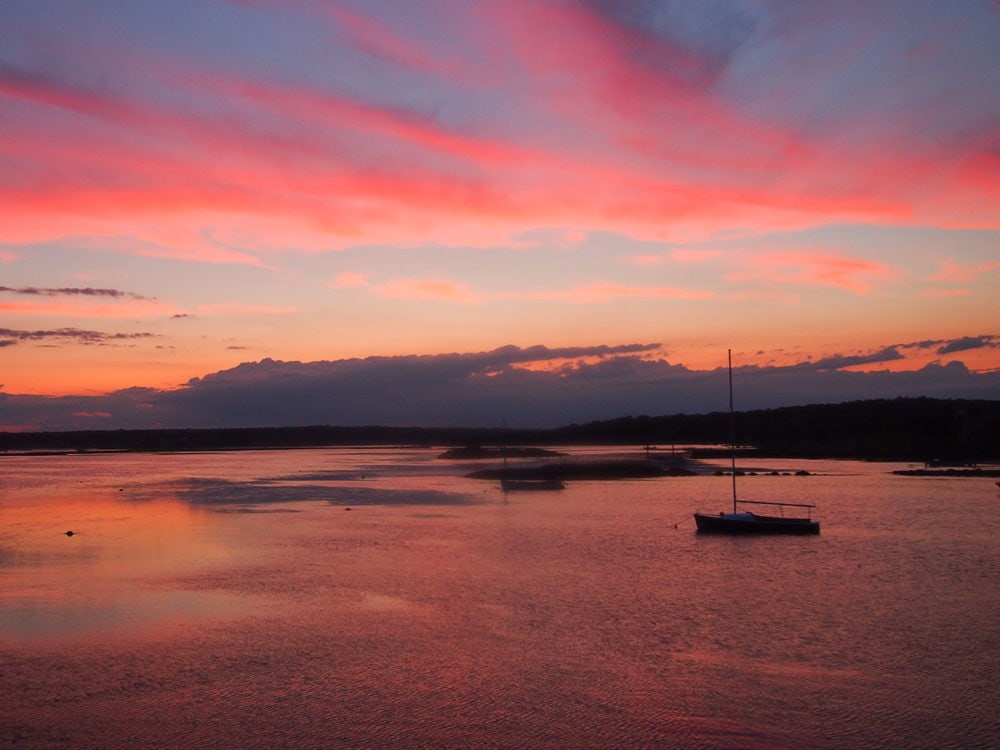
Comprising almost 40 miles of shoreline along the eastern shore of Cape Cod’s “forearm”, Cape Cod National Seashore is an extremely busy summer holiday destination. It’s one of the most visited New England national parks.
The national seashore is home to beautiful sandy beaches, lighthouses, cultural landscapes, marshes and ponds, and wild cranberry bogs. Popular activities include swimming and sunbathing, kayaking, fishing, hiking and biking.
It’s a beautiful coastal area drenched in history, from the original Native American inhabitants to the pilgrims and settlers to the fishing and whaling industry.
Looking east from the great Outer Beach, “a man may stand there and put all America behind him,” as Thoreau so eloquently described it.
More information: https://www.nps.gov/caco/index.htm
2. Saint-Gaudens National Historical Park, New Hampshire
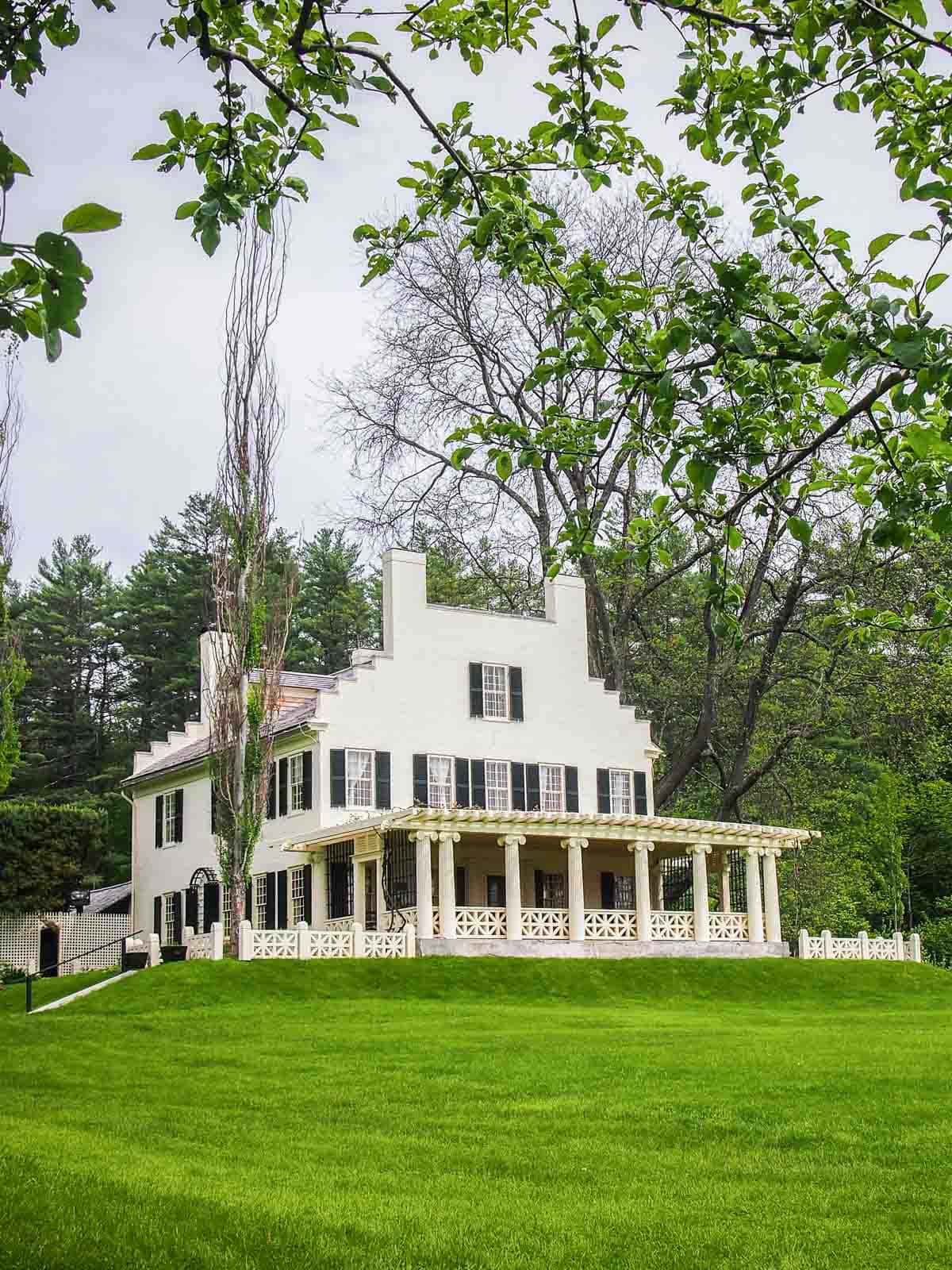
Besides the Appalachian Trail, which crosses fourteen different states, Saint-Gaudens National Historical Park is the only national park in New Hampshire.
Located in Cornish, near the Vermont border, the park preserves the former home, studios and gardens of Augustus Saint-Gaudens, one of the greatest American sculptors.
The domain was Saint-Gaudens’ summer home starting in 1885 and became his permanent year-round residence in 1900. He lived there until his death in 1907.
Born in 1848 in Dublin, Ireland, and raised in New York City, Augustus Saint-Gaudens was the son of an Irish mother and a French father.
He trained and studied arts in Europe, returning to New York City where he achieved widespread recognition for his Civil War hero monuments.
Several of his works still stand in major parks across the United States. Prominent examples are:
- Robert Gould Shaw Memorial, Boston Common in Boston
- Abraham Lincoln: The Man, Lincoln Park in Chicago
- General John Logan Memorial, Grant Park in Chicago
- William Tecumseh Sherman, Central Park in New York City
Later on, he founded the “Cornish Colony”, a popular artists’ colony that included many renowned painters, sculptors, architects, writers and even politicians.
At Saint-Gaudens National Historical Park, you can tour his former home, walk park trails and see several of his famous bronze sculptors.
More information: https://www.nps.gov/saga/index.htm
3. Adams National Historical Park, Massachusetts
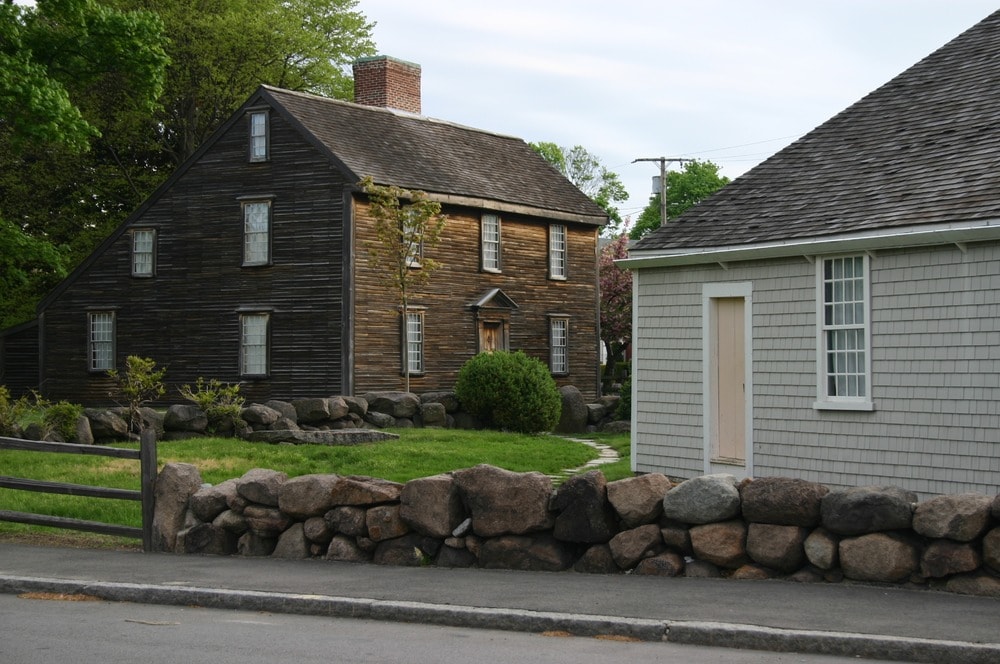
Located in Quincy, Massachusetts, Adams National Historical Park preserves the homes of two former U.S. presidents—John Adams and his son John Quincy Adams.
The park tells the story of no fewer than five generations of the Adams family, including the two presidents and first ladies, but also writers, historians and other members of the family.
There are eleven historic buildings in Adams National Historical Park, notably the Peace Field country estate, the John Adams Birthplace, the John Quincy Adams Birthplace and the Stone Library.
This fascinating park “tells the story of ‘heroes, statesmen, philosophers … and learned women’ whose ideas and actions helped to transform thirteen disparate colonies into one united nation,” the National Park Service says.
More information: https://www.nps.gov/adam/index.htm
4. Salem Maritime National Historic Site, Massachusetts,
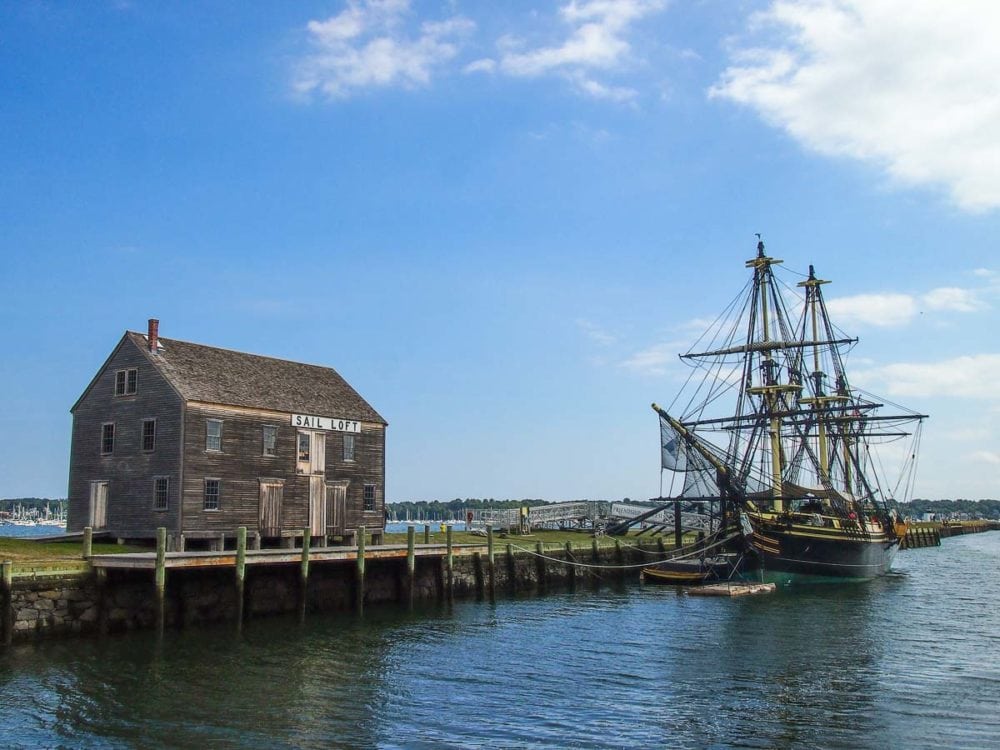
When Salem Maritime National Historic Site was established in 1938, it was the first of its kind in the United States. So, the site does not only preserve history, its existence itself is historic.
Located along the waterfront of Salem, Massachusetts—a port town also notorious for its 1692 witch trials—the national historic site encompasses twelve historic buildings, a downtown visitor center and a replica of the 1797 East Indiaman Friendship.
Its main historic structures include the Derby Wharf, the Salem Custom House, the West India Goods Store, the Hawkes House and the Pedrick Store House, among several others.
Visitors can immerse themselves in 600 years of maritime history in New England, from the earliest days of European colonization to the age of pirates and privateers to the American Revolution, end of slavery and beyond.
Particularly interesting are the exhibits about the Triangle Trade, a three-way trans-Atlantic trade system between Europe, Africa and North America. New England port towns like Salem played a major role in this trade from the 16th to the 19th centuries.
Additionally, Salem Maritime National Historic Site also interprets the stories of African Americans, both enslaved and free, and of the Polish immigrants who settled in Salem in the early-1900s.
More information: https://www.nps.gov/sama/index.htm
5. Marsh-Billings-Rockefeller National Historical Park, Vermont
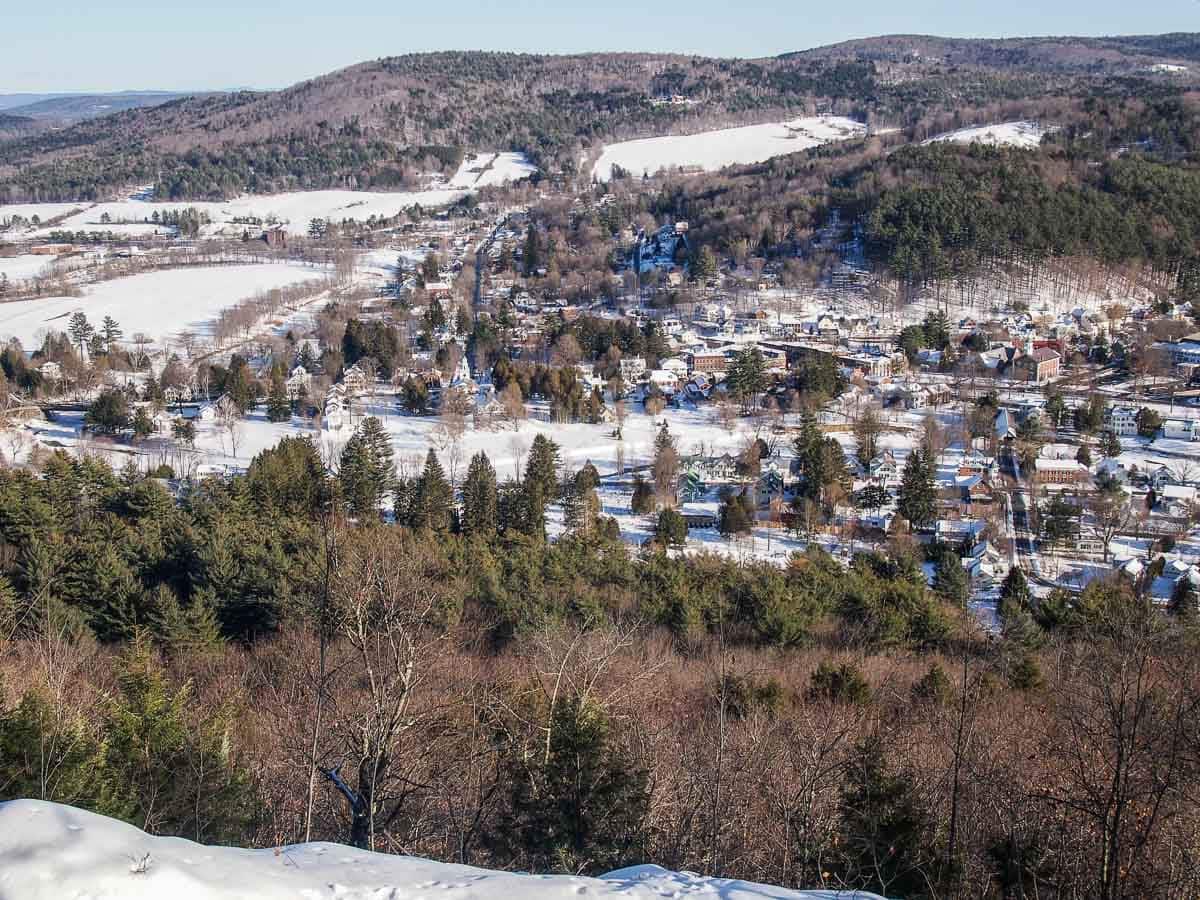
The only national park in Vermont, besides the Appalachian National Scenic Trail, Marsh-Billings-Rockefeller National Historical Park comprises “one of Vermont’s most beautiful landscapes,” according to the Park Service.
Situated in Woodstock, the park contains sugar maples and 400-year-old hemlocks, along with covered bridges and stone walls. It’s basically the definition of a rural New England landscape.
Additionally, the grounds are also home to the Marsh-Billings House and encompass the site where Frederick Billings created a managed forest and ran a progressive dairy farm.
This brings us to another, important aspect of this national historical park: conservation.
George Perkins Marsh: Philosophy of Land Stewardship
George Perkins Marsh grew up at this estate before leaving for nearby Dartmouth College in the early-1800s. He studied law and went into politics, developing an at-the-time-revolutionary land stewardship philosophy.
His 1864 publication of Man and Nature, or the Physical Geography as Modified by Human Behavior provided the foundation of America’s conservation movement.
This movement, of course, ultimately resulted in the establishment of the National Park System.
Frederick H. Billings: Conservation, Tourism and National Parks
Later on, the estate was acquired by Federick H. Billings, another Vermont native and lawyer. Billings made a fortune as a real estate developer in San Francisco during the California Gold Rush.
During his time in California, he spent time among the giant sequoias of the Yosemite Valley and fell in love with the West’s dramatic landscapes. Additionally, Billings was one of the founding partners and presidents of the Northern Pacific Railroad.
He began advocating the creation of national parks in America, particularly in the Yosemite Valley, the upper section of the Yellowstone River, and the areas that later became Glacier National Park and Mount Rainier National Park.
The story of Marsh-Billings-Rockefeller National Historical Park doesn’t end there, though. The next major owners of the estate were Laurance Rockefeller and his wife Mary French, the granddaughter of Frederick Billings.
Laurance and Mary Rockefeller: Philanthropy and National Park System Expansion
Laurance Rockefeller was one of America’s most influential and prominent philanthropists and conservationists in the 20th century.
“He combined the ecological philosophy of George Perkins Marsh with the practical conservationist approach of Frederick Billings,” the National Park Service says.
The son of John D. Rockefeller, who established the Jackson Hole Preserve that later became Grand Teton National Park, Laurance became the preserve’s first president.
He was instrumental in the expansion of the National Park System, partnering nature conservation with the construction of visitor facilities and services. One of his greatest contributions to America’s Park System is Virgin Islands National Park, for which “he was almost solely responsible.”
The Rockefellers donated their residential property and grounds to the National Park Service in 1992.
Six years later, the Marsh-Billings-Rockefeller National Historical Park opened to the public.
More information: https://www.nps.gov/mabi/index.htm
6. Appalachian National Scenic Trail, Connecticut, Massachusetts, Vermont, New Hampshire & Maine
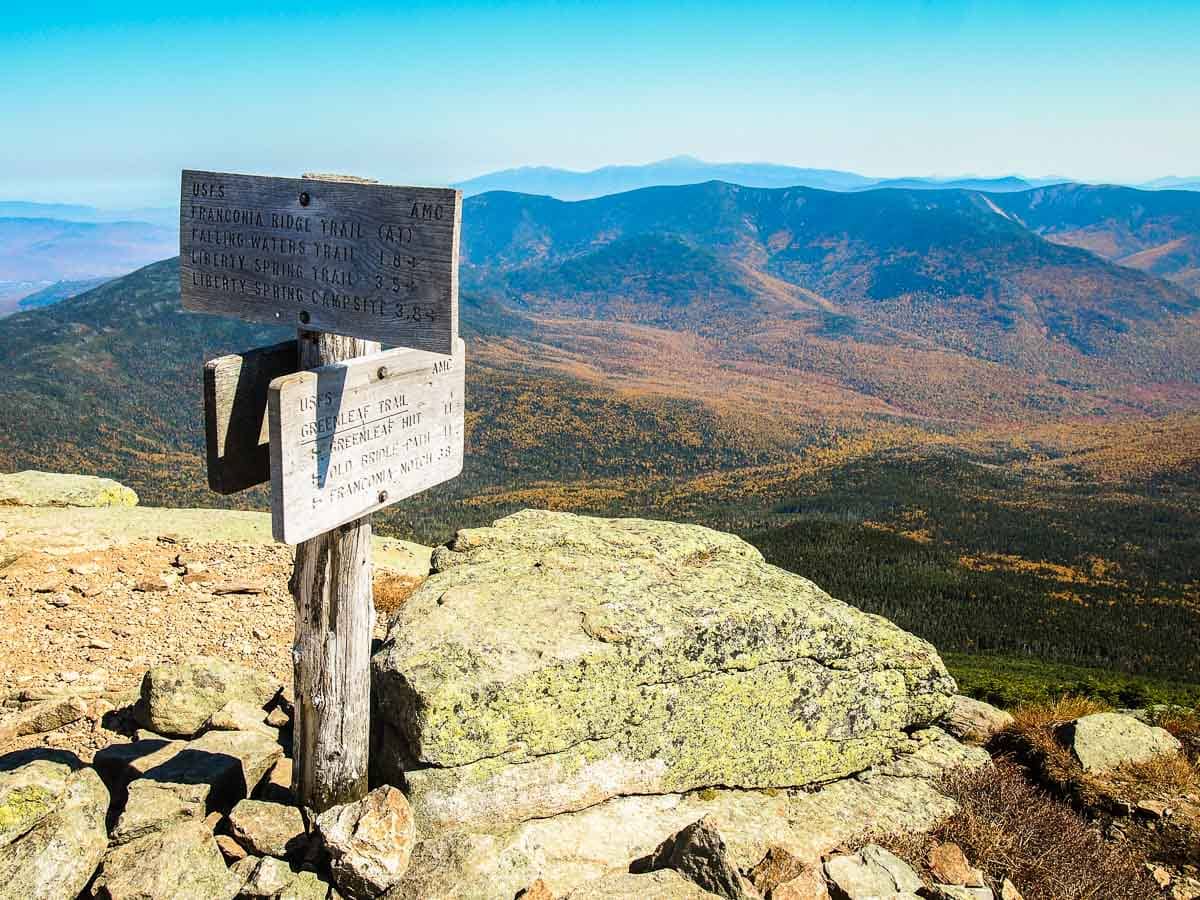
The Appalachian National Scenic Trail, more commonly known as the Appalachian Trail or simply as the AT, runs through five of the six states that make up New England.
Paralleling the crest of the Appalachian Mountains from Georgia to Maine, the trail is more than 2,180 miles long. It’s arguably the greatest and most famous long-distance trail in America.
Crossing no fewer than fourteen states, the trail is managed by a variety of entities, including the National Park Service, U.S. Forest Service, Appalachian Trail Conservancy and numerous state agencies.
You can hike sections of this iconic mountain trail in Connecticut, Massachusetts, Vermont, New Hampshire and Maine.
I personally recommend the stretches through Vermont’s Green Mountains, the Presidential Traverse in New Hampshire and the last section toward Mount Katahdin in Maine.
The trail allows for numerous day hike options, overnight weekend adventures and longer treks.
More information: https://www.nps.gov/appa/index.htm
7. John Fitzgerald Kennedy National Historic Site, Massachusetts
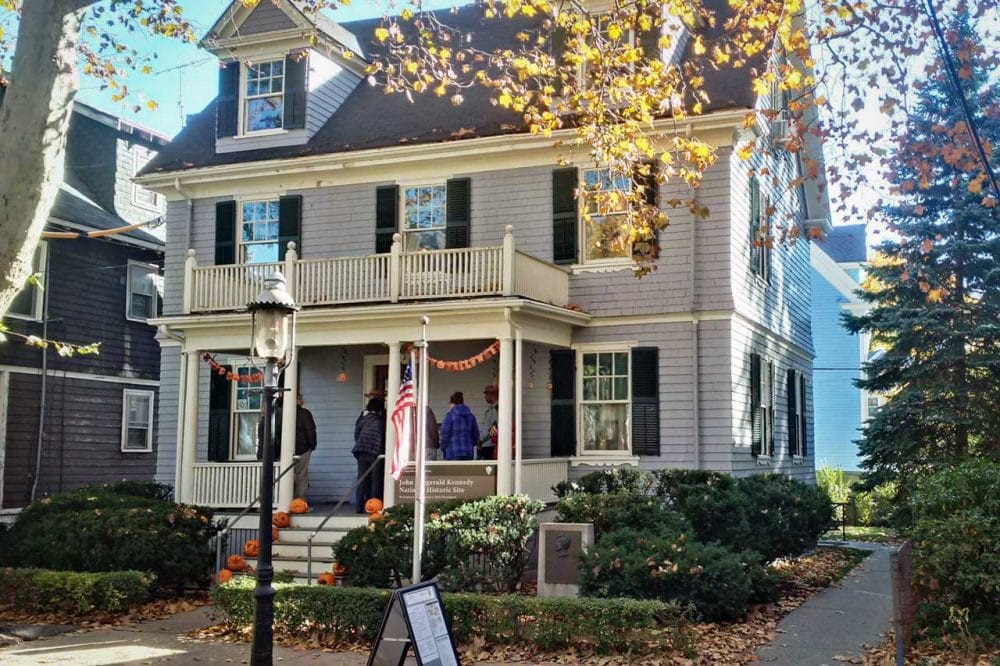
The John Fitzgerald Kennedy National Historic Site in Brookline, Massachusetts, preserves the birthplace and childhood home of John F. Kennedy, America’s 35th president.
This is where JFK grew up and where he learned the values that inspired him to live a life of public service.
The Kennedy family donated this home to the National Park Service, the former president’s mother hoping that future generations of Americans and foreign visitors would “get a better appreciation of the history of this wonderful country.”
You can tour this beautiful house and see the room where JFK was born, see his favorite childhood books, learn how Mrs. Kennedy managed a large family and learn about the influences that shaped John F. Kennedy as a child.
More information: https://www.nps.gov/jofi/index.htm
8. Frederick Law Olmsted National Historic Site, Massachusetts

A second National Park Service site in Brookline, a Boston suburb, the Frederick Law Olmsted National Historic Site is at 99 Warren Street.
This is where you can tour the former home and office of “the founder of American landscape architecture and the nation’s foremost parkmaker.”
After moving his home to the Boston suburbs in 1883, Olmsted established the first full-scale landscape design office in the world here. He called his residence “Fairsted.”
Frederick Law Olmsted National Historic Site consists of Olmsted’s original design office, which is pretty much the same as it was when he worked there, and the restored landscape of “Fairsted.”
The office contains almost a million original design records, an almost incredible number.
Those include designs for some of America’s grandest and most famous parks and grounds, from the U.S. Capitol and White House to Acadia National Park, Yosemite Valley and Central Park in New York City.
Designs for entire urban park systems are also preserved in the collection, including those for Buffalo, Montreal, Boston and Seattle.
Additionally and significantly, the Olmsted family was influential in the creation of the National Park Service itself. The Olmsted National Historic Site may just be one of the most important historic sites in the Park System, simply because it preserves the office of one of its own advocates and promotors.
More information: https://www.nps.gov/frla/index.htm
9. Boston National Historical Park, Massachusetts
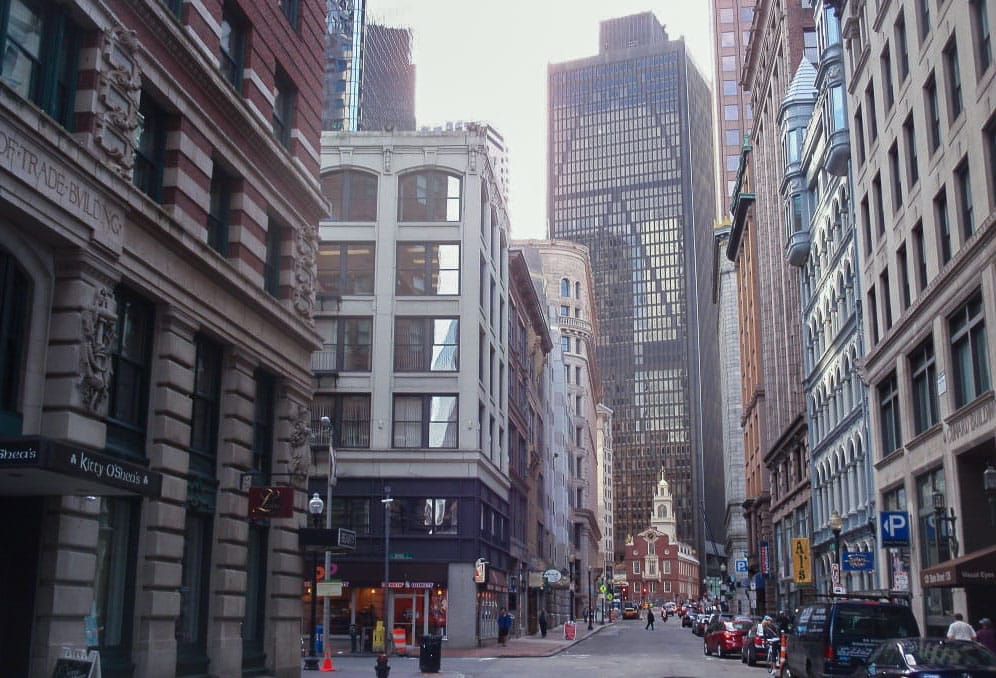
Along with the Boston African American National Historic Site and the Boston Harbor Islands National Recreation Area, Boston National Historical Park makes up the three “National Parks of Boston.”
Together, these three National Park Service sites tell the story of the American Revolution, as well as the 19th and 20th-century social and environmental revolutions.
Boston National Historical Park focuses on the role Boston played in the American Revolution. Visitors can explore the site of the first major battle in Revolutionary War and walk the famed Freedom Trail.
The park encompasses several historic sites and structures, most of which are along the Freedom Trail, which runs for 2.5 miles through central Boston, from the Boston Common to the Bunker Hill Monument.
Major landmarks include:
- Old South Meeting House
- Old State House
- Paul Revere House
- Old North Church
- Faneuil Hall
- Charlestown Navy Yard
- USS Constitution Museum
- USS Constitution
- Bunker Hill Museum
- Dorchester Heights
In addition to Boston’s role in the Revolutionary War and American independence, the park also interprets the city’s complicated maritime and merchant history. This, of course, was strongly intertwined with the Atlantic slave trade, which greatly shaped the 18th-century economy in Boston.
Later on, Boston became a bastion of social and civil rights. It was a hub of abolitionists, labor activists and suffragists, among numerous other rights groups.
The city was, for example, a center of the Underground Railroad, as well as of the women’s suffrage movement.
All of this is featured all throughout Boston National Historical Park, a park whose significance is difficult to exaggerate.
More information: https://www.nps.gov/bost/index.htm
10. Boston African American National Historic Site, Massachusetts

Situated on the North Slope of Boston’s Beacon Hill neighborhood, the Boston African American National Historic Site preserves 350 years of history. It’s one of the greatest New England national parks to learn about African American history in the United States.
The site comprises several historic buildings dating from before the Civil War related to the African American community in early-19th-century Boston. All these structures are linked by the Black Heritage Trail®, a 1.6-mile walk through this history-packed neighborhood.
Although most individual sites along the trail are private houses, a number of them are open to the public.
Especially the Abiel Smith School and the African Meeting House, the oldest still standing Black church in the United States, are worth visiting. Both are part of Boston’s Museum of African American History.
All these buildings have played a significant role in the story of African Americans—in Boston and the United States as a whole.
From the George Middleton House (leader of a local Black militia during the American Revolution) to the Phillips School (which became one of Boston’s first integrated schools in 1855) to the Lewis and Harriet Hayden House (an Underground Railroad safe house), the sheer amount of history preserved by the Boston African American National History Site is phenomenal.
More information: https://www.nps.gov/boaf/index.htm
11. New Bedford Whaling National Historical Park, Massachusetts
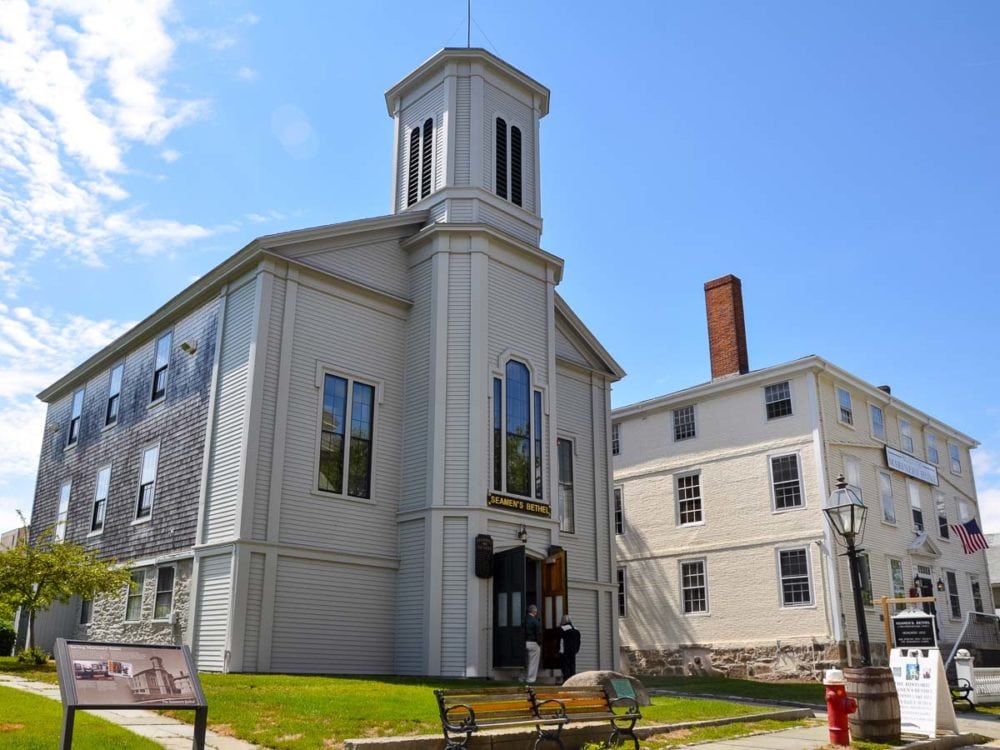
A model for collaborative partnerships within the National Park Service, New Bedford Whaling National Historical Park is remarkable in that the NPS only owns the park’s visitor center and a maritime learning center.
All other structures and landmarks within the park are either owned by the City of New Bedford or private entities.
New Bedford Whaling National Historical Park protects and preserves all kinds of cultural resources related to the 19th and 20th-century whaling industry in New England.
Specifically, it focuses on the city’s rich 19th-century whaling heritage, a time when it was the world’s leading whaling port.
To illustrate how big the whaling industry was in New Bedford, it suffices to say that the city was the setting for Herman Melville’s popular 1851 novel Moby Dick.
In addition to the visitor center and learning center, the park encompasses several historic landmarks, which are spread out across thirteen city blocks.
Those include the Nathan and Polly Johnson House, the Schooner Ernestina-Morrissey, the Rotch-Jones-Duff House, the Seamen’s Bethel and the superb New Bedford Whaling Museum.
When the national historical park was established in 1996, the legislation also included an affiliation with the Iñupiat Heritage Center in Barrow, Alaska.
This was to commemorate the historical link between New England and Alaska—there were over 2,000 whaling voyages from New Bedford to the Western Arctic.
“In the 19th century, these lonely seas [in Alaska] swarmed with commercial whalemen from New England, who sought the bowhead for its valuable baleen and blubber,” the National Park Service explains.
Besides being the world’s whaling capital in the 1800s, New Bedford also served as a stop on the Underground Railroad. Its rich history revolves around immigration, commerce, entrepreneurship and the textile industry, too.
More information: https://www.nps.gov/nebe/index.htm
12. Acadia National Park, Maine
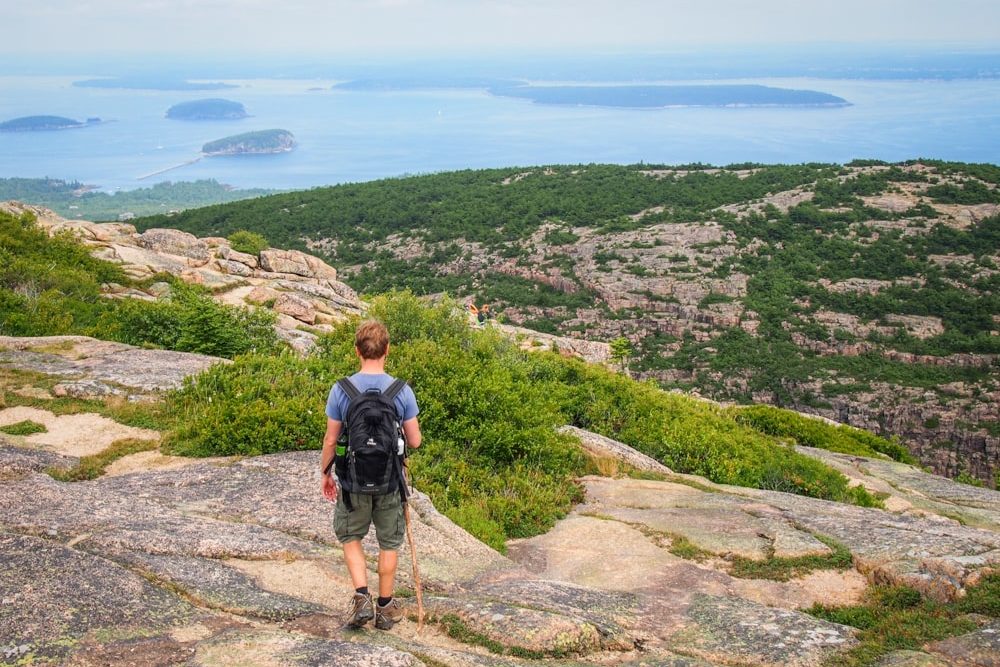
The oldest national park on the East Coast and only “true” national park in New England, Acadia National Park is home to wild coastlines, mountains, lakes and both terrestrial and marine wildlife.
Many miles of hiking trails and historic carriage roads wind their ways through this stunning seaside scenery. Pets are allowed on most of those trails and carriage roads, too, making Acadia one of America’s most dog-friendly national parks.
The beautiful Park Loop Road, on the other hand, takes motorists on a journey past the top attractions and most scenic views in Acadia National Park, including Sieur de Monts, Sand Beach, Thunder Hole, Otter Cliffs and Jordan Pond.
A spur road leads to the summit of Cadillac Mountain, the highest point on the Eastern Seaboard of the United States. You can also get to this iconic mountain via either the South Ridge or North Ridge trails.
Other popular hikes in Acadia National Park include the Bubbles Divide Trail, the Precipice Trail, the Jordan Pond Trail, Ocean Path and the Great Head Trail.
It’s easy to see why this is one of the most visited national parks in America.
Acadia protects the stunning natural beauty of Maine’s rocky headlands and all the fauna and flora that finds refuge there. Especially beautiful in the fall, this is the crown jewel of the New England national parks.
Cultural heritage is evident in the park’s historic carriage roads, financed and designed by John D. Rockefeller.
Other people influential in the establishment of Acadia National Park are Charles W. Eliot, his son Charles Eliot and George B. Dorr, who’s known as the “Father of Acadia National Park.”
A number of campgrounds are scattered across the park’s islands, of which Mount Desert Island is the largest. More accommodation is available in bustling Bar Harbor, the gateway to Acadia.
More information: https://www.nps.gov/acad/index.htm
Complete List of New England National Park Service Sites
Here’s the full list of all New England national parks and NPS sites, from Maine’s Acadia National Park to Connecticut’s Weir Farm National Historic Site.
- Acadia National Park, Maine
- Adams Historical Park, Massachusetts
- Appalachian National Scenic Trail, Connecticut, Massachusetts, Vermont, New Hampshire & Maine
- Boston African American National Historic Site, Massachusetts
- Boston Harbor Islands National Recreation Area, Massachusetts
- Boston National Historical Park, Massachusetts
- Cape Cod National Seashore, Massachusetts
- Frederick Law Olmsted National Historic Site, Massachusetts
- John Fitzgerald Kennedy National Historic Site, Massachusetts
- Longfellow National Historic Site, Massachusetts
- Lowell National Historical Park, Massachusetts
- Marsh-Billings-Rockefeller National Historical Park, Vermont
- Minute Man National Historical Park, Massachusetts
- New Bedford Whaling National Historical Park, Massachusetts
- Roger Williams National Memorial, Rhode Island
- Saint-Gaudens National Historic Site, New Hampshire
- Salem Maritime National Historic Site, Massachusetts
- Saugus Iron Works National Historic Site, Massachusetts
- Springfield Armory National Historic Site, Massachusetts
- Weir Farm National Historic Site, Connecticut
